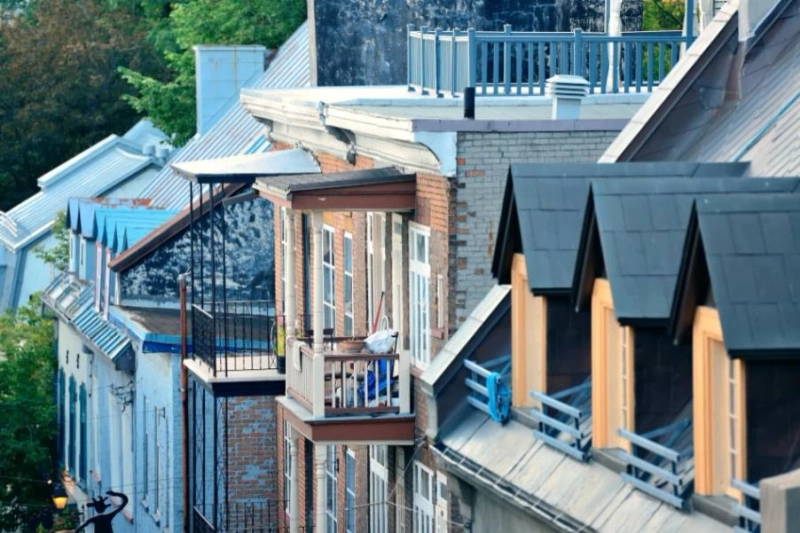Balcony inspections and repairs have become a critical aspect of property management in the United States, particularly in states like California, where specific legislation mandates regular assessments of exterior elevated elements (EEEs).
This article delves into the importance of balcony inspection services, the legal framework surrounding them, and the process involved in ensuring balconies are safe and compliant.
Importance of Balcony Inspections
Balconies, decks, and other elevated structures are prone to wear and tear over time.
Factors such as weather, moisture, and the use of wood-based materials can lead to structural degradation. Regular balcony inspections are essential to identify potential hazards that could compromise safety. The benefits of conducting these inspections include:
- Risk Mitigation: Regular inspections help detect issues such as dry rot, termite damage, corrosion, or loose railings, which can lead to accidents or structural failures.
- Legal Compliance: In California, Senate Bills SB-326 and SB-721 require regular inspections of balconies and other EEEs in multi-family residential buildings. Compliance with these laws is crucial for property owners to avoid legal repercussions.
- Property Value: Well-maintained balconies enhance the aesthetic appeal and overall value of a property. Investing in inspection and repair services preserves the long-term value of the investment.
- Peace of Mind: Knowing that a balcony is structurally sound provides reassurance to homeowners, property managers, and tenants.
Legal Framework
In response to tragic incidents, such as the 2015 Berkeley balcony collapse that resulted in six fatalities, California introduced SB-721 and SB-326. These laws require:
- SB-721: Multi-family residential buildings with three or more dwelling units must complete inspections of all EEEs by January 1, 2025, and every six years thereafter.
- SB-326: Condominium homeowners\' associations (HOAs) must conduct inspections of all EEEs by January 1, 2025, and every nine years thereafter.
These regulations aim to ensure that balconies and similar structures are safe for human use and free from hazardous conditions caused by deterioration or improper alterations.
The Inspection Process
The balcony inspection process typically involves several key steps:
- Hiring Professionals: Property owners must engage licensed professionals, such as structural engineers or specialized balcony inspection services, to conduct the inspections. This is crucial for compliance with state laws.
- Conducting the Inspection: Inspectors will evaluate the condition of balconies, decks, and other EEEs, focusing on structural integrity, waterproofing elements, and any signs of decay or damage.
- Reporting Findings: After the inspection, a detailed report is generated, outlining the condition of each inspected element. If repairs are necessary, the report will specify the required actions.
- Repair Coordination: Property owners can then seek estimates from various contractors for the necessary repairs. Some inspection services may also offer repair solutions.
- Compliance with Deadlines: Property owners must complete repairs within specified timeframes, typically within 120 days of receiving the inspection report, to avoid penalties.
Common Issues Found During Inspections
During balcony inspections, several common issues may be identified:
- Structural Damage: This can include sagging or bending due to water damage or wear and tear.
- Waterproofing Failures: Inadequate waterproofing can lead to moisture infiltration, causing wood decay and compromising structural integrity.
- Corrosion: Metal components, such as railings and supports, may suffer from corrosion, which weakens their load-bearing capacity.
- Improper Alterations: Modifications made without proper oversight can lead to safety hazards.
Repairing Balconies
Once an inspection report identifies necessary repairs, property owners must act promptly. The repair process generally includes:
- Obtaining Permits: Before commencing repairs, owners must apply for the appropriate permits, which can take time to process.
- Hiring Qualified Contractors: Engaging licensed contractors who specialize in balcony repairs ensures that the work is performed to code and meets safety standards.
- Executing Repairs: Repairs may involve replacing damaged wood, reinforcing structural elements, or improving waterproofing systems.
- Final Inspection: After repairs are completed, a follow-up inspection may be necessary to ensure compliance with safety standards.
Conclusion
Balcony inspections and repairs are vital for ensuring the safety and longevity of residential properties. With the implementation of laws like SB-721 and SB-326, property owners must prioritize these inspections to avoid legal issues and protect their investments.
By engaging professional balcony inspection services, property managers can maintain safe living environments, enhance property values, and provide peace of mind to residents.
Regular maintenance and prompt repairs are essential components of responsible property management, ensuring that balconies remain safe and enjoyable for all users.


